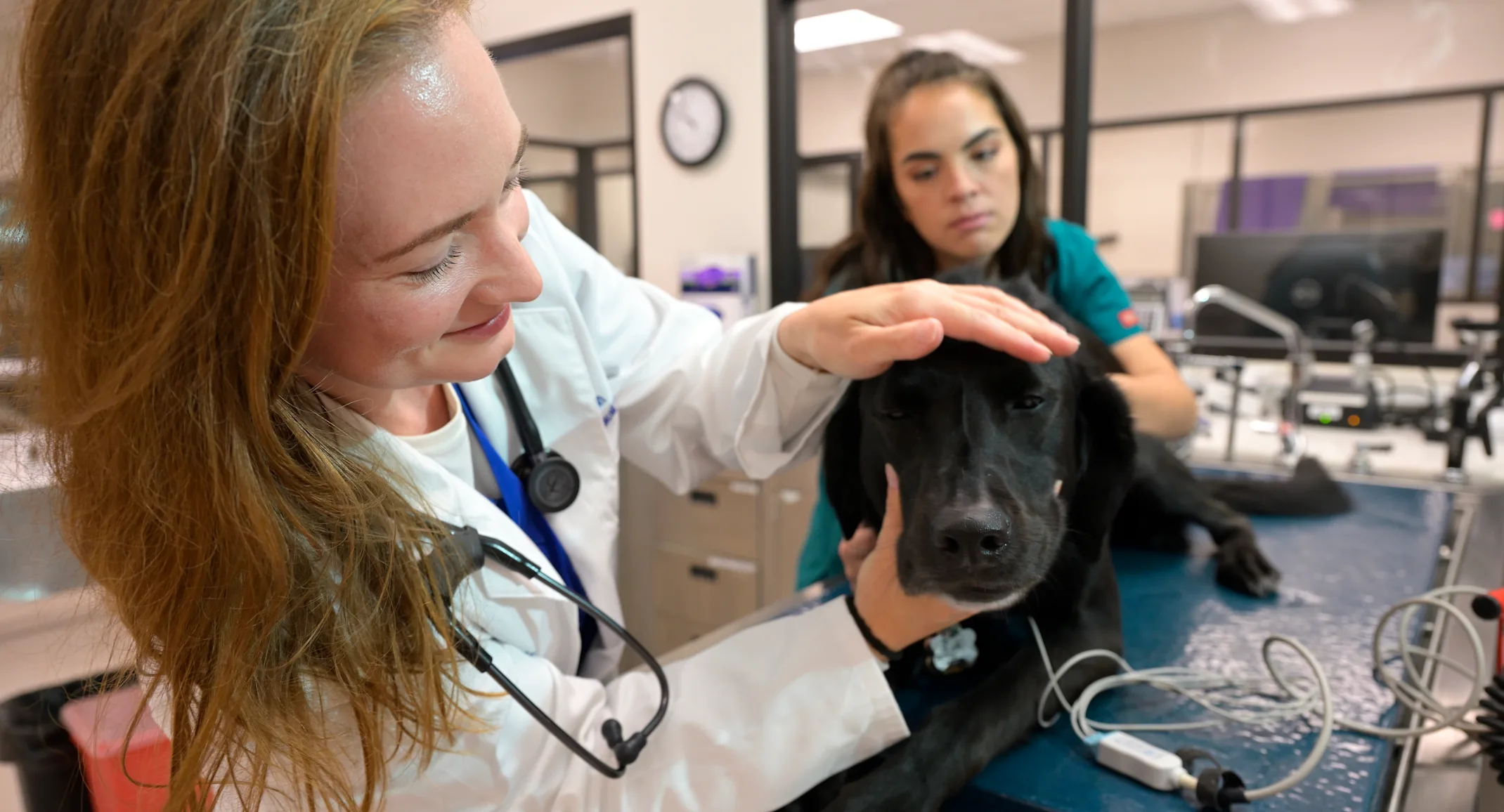Emergency Versus Urgent Care: How to Know Where to Take Your Pet
The Exam Room

If your pet is eating and drinking normally—and they are displaying no distress—you can likely schedule an appointment with your regular veterinarian, but some issues require immediate attention. If your pet has a life-threatening injury or illness, you should bring them to an emergency veterinary hospital immediately. However, if your pet’s non-life-threatening health condition requires veterinary attention within a day or two, urgent care is appropriate if your regular veterinarian cannot see your pet for several days or more. Learn which conditions an emergency clinic and an urgent care clinic each treat.
Emergency veterinary care
If your pet is experiencing a life-threatening situation or condition, they need emergency care immediately. Your pet needs emergency veterinary care if they experience the following:
Severe trauma — Serious trauma—for example, being hit by a car or falling from a significant height—is a veterinary emergency. In these situations, your pet can sustain severe internal injuries, and a veterinary professional should evaluate them as soon as possible.
Collapse — Your pet may collapse or lose consciousness for many reasons, including internal bleeding, heart abnormalities, low blood sugar, neurologic disorders, or poisoning, which constitute a veterinary emergency. A veterinary professional must determine the cause of your pet’s collapse to provide appropriate treatment.
Significant bleeding — Significant blood loss can be life-threatening. If your pet is bleeding severely or their bleeding lasts for longer than five minutes, place pressure on the wound, and take them to the nearest emergency veterinary hospital.
Respiratory distress — Your pet will likely become extremely upset if they experience respiratory distress, which can worsen quickly, and be life-threatening. If your pet is breathing rapidly, making loud noises when they attempt to breathe, exhibiting exaggerated chest or abdominal movements when they breathe, or exhibiting blue gums, bring them to an emergency veterinary hospital immediately.
Toxin or foreign-body ingestion — If you know or suspect your pet has ingested a toxin or a foreign body, a veterinary professional should examine them as soon as possible.
Paralysis — If your pet is unable to move their limbs, they may have a fractured spine or a disk herniation, which requires immediate veterinary intervention to help prevent permanent paralysis.
Heatstroke — Pets are extremely susceptible to heatstroke. If your pet’s body temperature is higher than 105 degrees, they can develop significant inflammation throughout their body, leading to life-threatening consequences. If your pet overheats, begin cooling them immediately, and rush them to a veterinary emergency room.
Severe diarrhea or vomiting — Severe diarrhea or vomiting—especially with fever, lethargy, and pain—constitutes a pet health emergency. Puppies and kittens with these signs are at an increased risk for life-threatening consequences.
Inability to urinate or defecate — If your pet is straining, and appears unable to urinate or defecate, they are experiencing a veterinary emergency.
Broken bone — If your pet sustains a bone fracture, bring them to an emergency veterinary facility as soon as possible.
Bloat — Bloat is a serious, potentially life-threatening condition in which a dog’s stomach fills with gas and twists. This condition is fatal unless your dog receives emergency care.
Seizure — Your pet can experience seizures because of many issues—epilepsy, liver shunts, brain tumors, and infections. A single seizure is rarely a problem, but if your pet’s seizure continues for longer than five minutes, or they experience a second seizure within a 24-hour period, bring them to an emergency veterinary care facility.
Urgent veterinary care
If your pet needs prompt veterinary care, but their condition is non-life-threatening, an urgent veterinary care facility is appropriate for their treatment. Urgent veterinary care facilities provide effective care if your pet experiences one of the following conditions:
Vomiting and diarrhea — If your pet vomits or has diarrhea and otherwise appears normal, you can monitor their condition, but if they have more than two bouts in a 24-hour period, bring them to an urgent care facility. If your pet is experiencing severe vomiting or diarrhea, take them to an emergency facility.
Wounds — If your pet has a small open wound, an urgent veterinary care professional will clean, treat, and bandage their injury in a timely manner, but this is not a life-threatening situation.
Eye injuries — If your pet is squinting, excessively tearing, rubbing their eyes, or has an obvious eye injury, take them to an urgent care hospital to help prevent vision loss.
Ear infections — Pets’ ear infections can be extremely painful, and they cannot wait days to see their regular veterinarian. If your pet shows ear infection signs, bring them to an urgent veterinary care facility.
Lameness — If your pet is limping—but shows no distress—take them to an urgent care facility.
Fever — If your pet has a mild fever (i.e., lower than 105 degrees), take them to an urgent care facility. If your pet’s temperature is higher than 105 degrees, they need emergency veterinary care.
Inappetence — A decreased appetite (i.e., inappetence) can indicate a medical condition, but this is a non-life-threatening situation.
Severe skin conditions — Severe hot spots or rashes can extremely distress your pet, but emergency care is not required. An urgent veterinary care facility can provide effective treatment for your pet’s severe skin conditions.
Blood in urine or stool — If your pet has blood in their urine or stool, a veterinarian at an urgent care facility can provide appropriate care.
If your pet requires care at an emergency or urgent care facility, stay calm. Remind yourself that you have done your best to ensure your pet has a positive outcome, and remember these suggestions:
Demonstrate patience — Keep in mind that the veterinary team is doing everything in their power to provide your pet’s treatment.
Remain financially prepared — Be prepared to pay in full on-site for your pet’s care. If you have pet health insurance, ensure you have your policy information with you, and contact your insurance provider as soon as possible.
Notify your regular veterinarian — Ensure you inform your regular veterinarian about your pet having received emergency or urgent care, so they can provide any necessary follow-up treatment.
Accidents happen, and so do unexpected illnesses, so you should always be prepared to seek the veterinary care facility that can appropriately provide your pets’ immediate treatment needs. Use our locator to find an emergency veterinary hospital or urgent care clinic near you.
